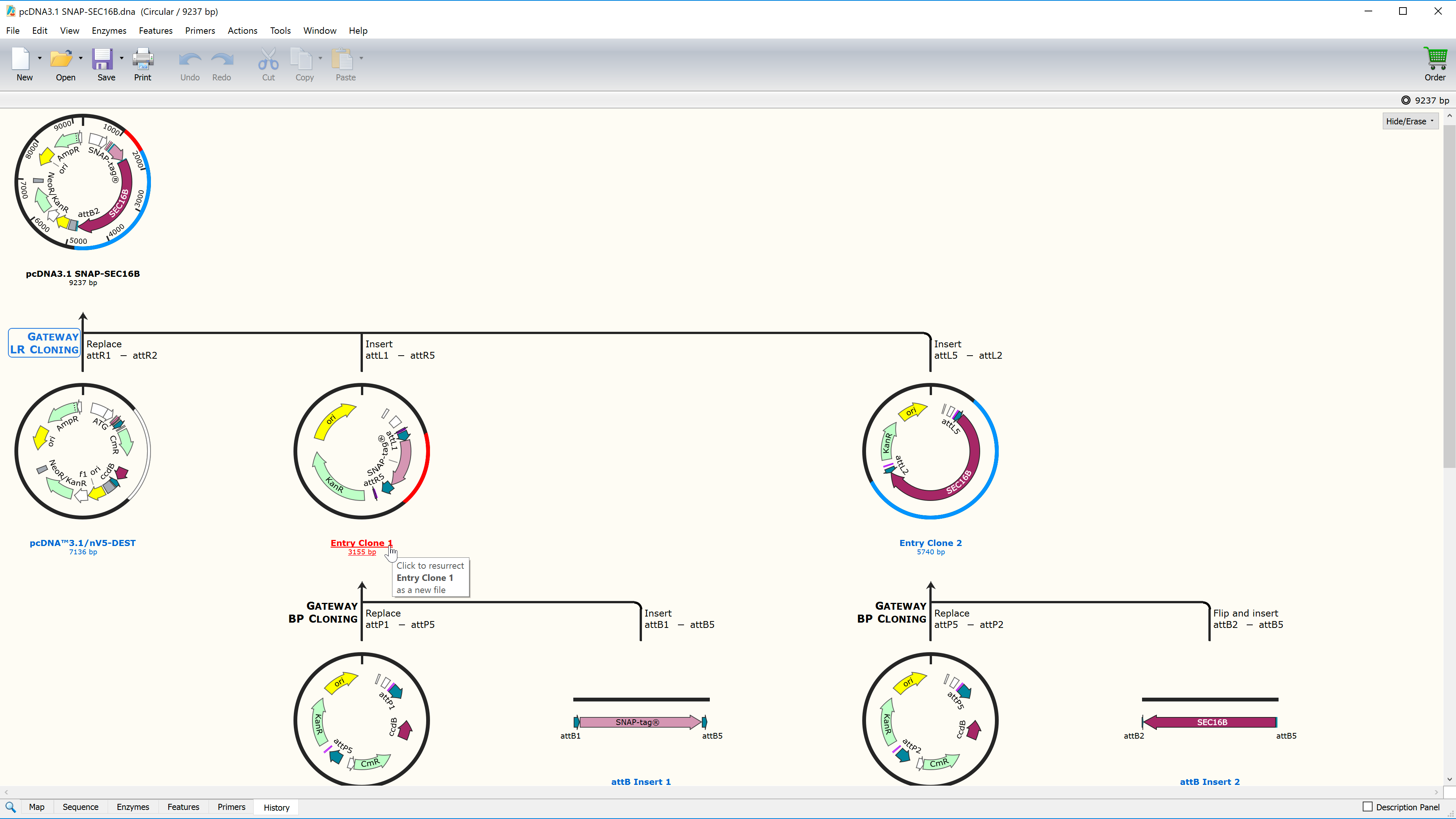
Snapgene e coli software#
coli strains is dam methylated and therefore susceptible to Dpn I digestion. Free software that allows you to create, browse, and share richly annotated sequence files. Sticky ends from different DraIII sites may not be compatible.ĮcoRV is reportedly more prone than its isoschizomer Eco32I to delete a base after cleavage.Ĭ T G A A G ( N ) 14 N N G A C T T C ( N ) 14Ĭleavage may be enhanced when more than one copy of the AcuI recognition sequence is present. The Dpn I endonuclease (target sequence: 5-Gm6ATC-3) is specific for methylated and hemimethylated DNA and is used to digest the parental DNA template and to select for mutation-containing synthesized DNA.6 (DNA isolated from almost all E. Sticky ends from different TaqII sites may not be compatible. G A C C G A ( N ) 9 N N C T G G C T ( N ) 9 Sticky ends from different BciVI sites may not be compatible.īssHII is typically used at 50☌, but is 75% active at 37☌.īclI is typically used at 50-55☌, but is 50% active at 37☌. This inhibition can be relieved by adding lactose or isopropyl-D. Using anti-VEGF Fab as an example, here we provide a protocol based on the alkaline phosphatase (phoA) promoter and the heat-stable enterotoxin II (STII) leader sequence. In addition, the extracellular expression allows for the direct harvesting of proteins from the culture supernatant, sparing the procedures of cell lysis and reducing contamination of host cell protein or DNA. The extracellular expression is of particularly interest since it releases the product into the medium, while periplasmic expression yield is limited to the periplasm space. The secretory expression of proteins in periplasm or extracellular medium are promising strategies to prevent the formation of inclusion bodies to improve the efficiency to produce Fabs from E. coli (DEC) and are classified into pathotypes according to specific virulence factors and ensuing clinical manifestations ( Gomes et al., 2016 ). coli, which has been the bottleneck for exogenous protein expressions using this system. coli that induce intestinal disease are known as diarrheagenic E.


However, the disulfide-bonds containing exogenous protein, including Fab, tend to form insoluble inclusion bodies in E. Therefore, Fab can be cost-effectively produced using an Escherichia coli (E. In comparison with full-length IgGs, antigen binding fragments (Fabs) are smaller in size and do not require the complexed post-translational modification.


 0 kommentar(er)
0 kommentar(er)
